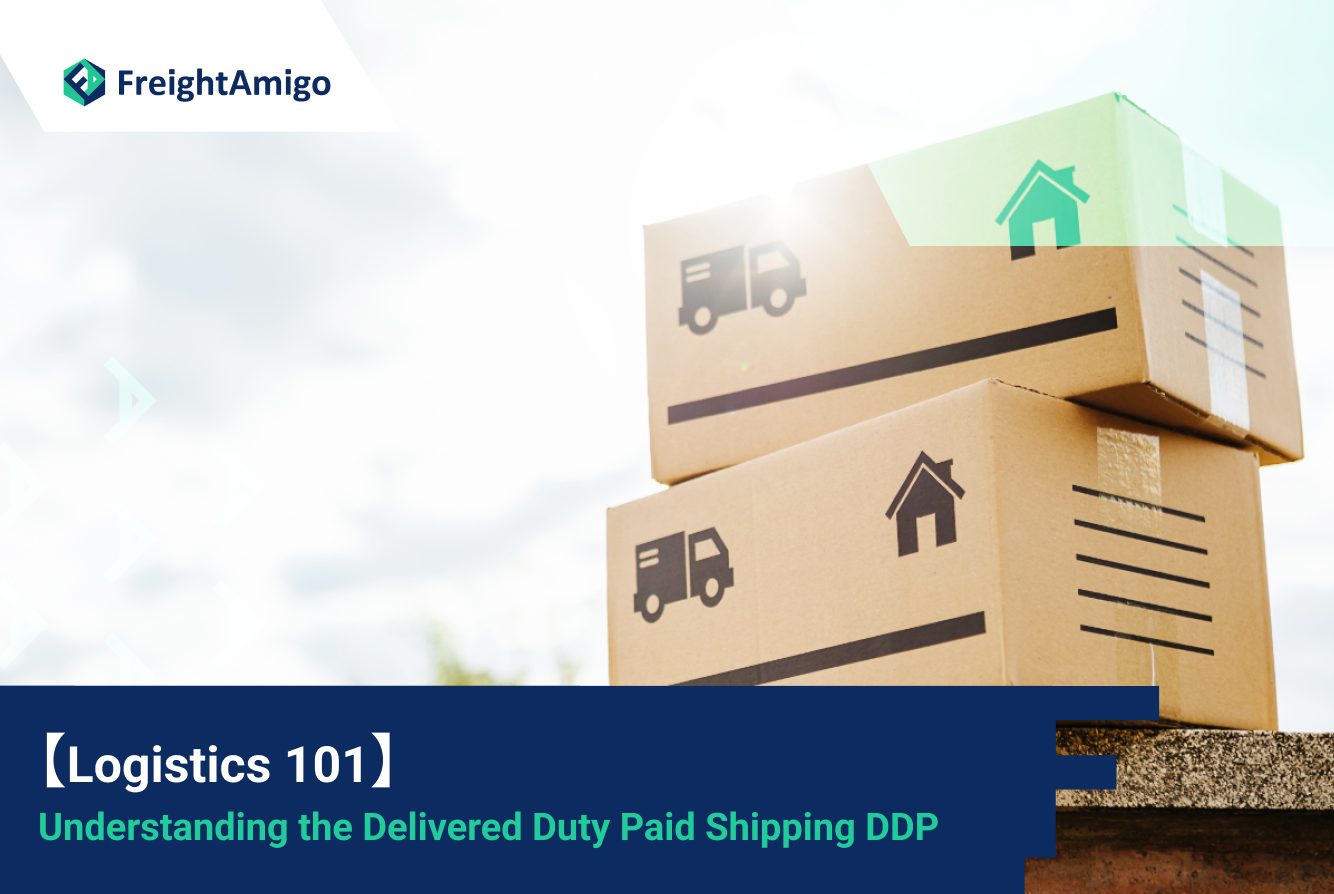Looking for a hassle-free way to ship goods internationally? Look no further than DDP (Delivered Duty Paid) shipping! In this blog, we’ll explore everything you need to know about DDP shipping, including its key benefits, the responsibilities of buyers and sellers, the DDP shipping timeline, and how to calculate DDP cost and price. Whether you’re a business owner looking to expand your global reach or a consumer looking to purchase goods from overseas, DDP shipping can be a convenient and cost-effective option. So, let’s dive into the world of DDP shipping and discover how it can simplify your international shipping process!
Author Name:Tiffany Lee – Marketing Analyst at FreightAmigo
Want to compare the best Express, Air Freight, Sea Freight, Rail Freight & Trucking rates so as to have better control on cost?
What is DDP shipping?
Delivered Duty Paid (DDP) is an incoterm used in international shipments where the seller takes on the responsibility for transporting the goods to an agreed-upon destination. This agreement includes arranging transportation, covering associated costs such as export clearance and customs documentation, and assuming risks such as VAT charges, bribery, and unexpected storage costs. DDP benefits the buyer as the seller assumes most of the liability and costs associated with shipping.
Why DDP shipping would be an attractive option for buyers?
DDP shipping is an attractive option for buyers because it reduces the complexity and uncertainty of international shipping. With DDP shipping, the buyer knows the exact cost of the goods and shipping upfront, and does not need to worry about any additional fees or customs clearance procedures. This allows the buyer to focus on their core business activities and avoid delays or unexpected costs.
Buyers and Sellers Responsibilities
In a DDP shipping arrangement, the seller is responsible for all costs and risks associated with delivering the goods to the buyer’s specified destination, including customs clearance, import duties, taxes, and transportation. The seller must ensure that the goods are delivered to the buyer’s specified location on time and in good condition. The buyer’s responsibility is to provide the seller with accurate and complete information about the destination, including the correct address, contact information, and any special requirements or restrictions.
Illustrate the DDP shipping timeline
The DDP shipping timeline typically involves several stages, including order processing, production, packaging, transportation, customs clearance, and delivery. The exact timeline can vary depending on the origin and destination of the shipment, as well as any unforeseen delays or issues. Generally, the seller will provide the buyer with an estimated delivery date and tracking information to keep them informed throughout the process.
How To Calculate DDP Cost & Price?
To calculate the DDP cost and price, the seller must consider all costs associated with delivering the goods to the buyer’s specified destination, including product cost, freight charges, insurance, customs duties, taxes, and any other fees or charges. The seller can then add a profit margin to determine the final price. The buyer can use the DDP price to compare different suppliers and make informed purchasing decisions.
What Is the Difference Between DDP and DDU?
The main difference between DDP and DDU (Delivered Duty Unpaid) shipping is that with DDU, the buyer is responsible for paying any customs duties and taxes associated with the shipment. This means that the buyer may need to handle customs clearance procedures and pay additional fees before they can receive the goods. With DDP, on the other hand, the seller takes care of all customs procedures and costs, so the buyer does not need to worry about any additional fees or delays.
FAQ
- What are the advantages of DDP shipping?
DDP shipping offers several advantages for both the buyer and seller. For the buyer, it provides a clear and predictable cost structure, as all fees and taxes are included in the price of the goods. This can help to avoid unexpected costs or delays in customs clearance. For the seller, it can make the process of shipping goods simpler and more efficient, as they are responsible for all aspects of shipping and customs clearance.
- Are there any drawbacks to DDP shipping?
One potential drawback of DDP shipping is that it can be more expensive than other shipping options, as the seller is responsible for paying all associated taxes and fees. Additionally, the seller assumes all of the risk and liability associated with shipping the goods, which can be a concern if there are any issues with customs or delivery. Finally, DDP shipping may not be available in all countries or for all types of goods, so it is important to check with your shipping provider to determine if it is the best option for your specific needs.
- Who is responsible for arranging DDP shipping?
Usually, the seller or carrier is responsible for arranging DDP shipping. They are responsible for ensuring that the goods are delivered to the buyer or recipient at the destination and for paying all related taxes and fees.
- What documents are required for DDP shipping?
The specific documents required for DDP shipping may vary depending on the country of origin and destination, as well as the type of goods being shipped. However, some common documents that may be required include commercial invoices, packing lists, bills of lading, and import/export permits.
- How are the costs of DDP shipping calculated?
The costs of DDP shipping are typically calculated based on the weight and dimensions of the goods being shipped, the destination country, and any applicable taxes and tariffs. The seller or carrier will usually provide a quote for the shipping costs, which includes all relevant fees and charges.
- What is the delivery time for DDP shipping?
The delivery time for DDP shipping may vary depending on the shipping provider and destination country. Generally, international shipping delivery times can range from a few days to several weeks, depending on distance and any customs requirements.
- What happens if the goods are damaged or lost during DDP shipping?
If the goods are damaged or lost during DDP shipping, the seller or carrier is usually responsible for filing a claim with the shipping provider or insurance company. They may also be responsible for arranging to resend the goods for delivery to the buyer or recipient. It is important to carefully review the terms and conditions of the shipping agreement to understand the responsibilities of each party in the event of loss or damage.
There are different options for cargo transportation. If you want to choose the most convenient and suitable solution, it is best to have the full support of logistics experts! If you are planning to ship goods overseas, please go to the FreightAmigo page for inquiries.
===
If you have any inquiries on logistics/supply chain, feel free to contact FreightAmigo now:
Chat with us online OR
Phone : +852 28121686
WhatsApp: +852 27467829









































